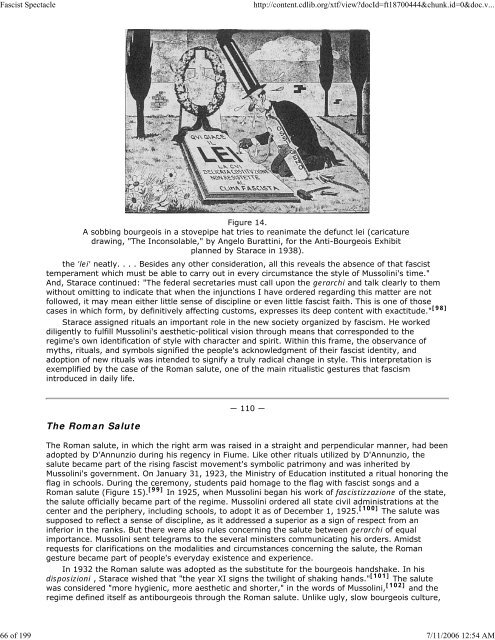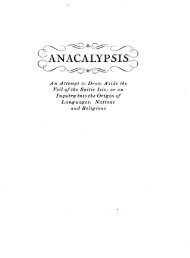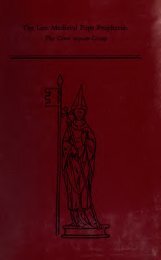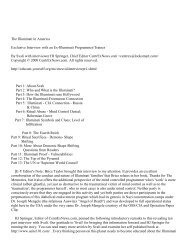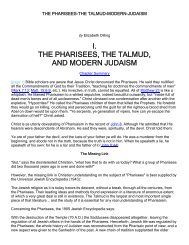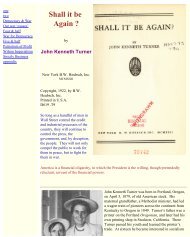Create successful ePaper yourself
Turn your PDF publications into a flip-book with our unique Google optimized e-Paper software.
<strong>Fascist</strong> <strong>Spectacle</strong> http://content.cdlib.org/xtf/view?docId=ft18700444&chunk.id=0&doc.v...<br />
Figure 14.<br />
A sobbing bourgeois in a stovepipe hat tries to reanimate the defunct lei (caricature<br />
drawing, "The Inconsolable," by Angelo Burattini, for the Anti-Bourgeois Exhibit<br />
planned by Starace in 1938).<br />
the 'lei' neatly. . . . Besides any other consideration, all this reveals the absence of that fascist<br />
temperament which must be able to carry out in every circumstance the style of Mussolini's time."<br />
And, Starace continued: "The federal secretaries must call upon the gerarchi and talk clearly to them<br />
without omitting to indicate that when the injunctions I have ordered regarding this matter are not<br />
followed, it may mean either little sense of discipline or even little fascist faith. This is one of those<br />
cases in which form, by definitively affecting customs, expresses its deep content with exactitude." [98]<br />
Starace assigned rituals an important role in the new society organized by fascism. He worked<br />
diligently to fulfill Mussolini's aesthetic-political vision through means that corresponded to the<br />
regime's own identification of style with character and spirit. Within this frame, the observance of<br />
myths, rituals, and symbols signified the people's acknowledgment of their fascist identity, and<br />
adoption of new rituals was intended to signify a truly radical change in style. This interpretation is<br />
exemplified by the case of the Roman salute, one of the main ritualistic gestures that fascism<br />
introduced in daily life.<br />
The Roman Salute<br />
― 110 ―<br />
The Roman salute, in which the right arm was raised in a straight and perpendicular manner, had been<br />
adopted by D'Annunzio during his regency in Fiume. Like other rituals utilized by D'Annunzio, the<br />
salute became part of the rising fascist movement's symbolic patrimony and was inherited by<br />
Mussolini's government. On January 31, 1923, the Ministry of Education instituted a ritual honoring the<br />
flag in schools. During the ceremony, students paid homage to the flag with fascist songs and a<br />
Roman salute (Figure 15). [99] In 1925, when Mussolini began his work of fascistizzazione of the state,<br />
the salute officially became part of the regime. Mussolini ordered all state civil administrations at the<br />
center and the periphery, including schools, to adopt it as of December 1, 1925. [100] The salute was<br />
supposed to reflect a sense of discipline, as it addressed a superior as a sign of respect from an<br />
inferior in the ranks. But there were also rules concerning the salute between gerarchi of equal<br />
importance. Mussolini sent telegrams to the several ministers communicating his orders. Amidst<br />
requests for clarifications on the modalities and circumstances concerning the salute, the Roman<br />
gesture became part of people's everyday existence and experience.<br />
In 1932 the Roman salute was adopted as the substitute for the bourgeois handshake. In his<br />
disposizioni , Starace wished that "the year XI signs the twilight of shaking hands." [101] The salute<br />
was considered "more hygienic, more aesthetic and shorter," in the words of Mussolini, [102] and the<br />
regime defined itself as antibourgeois through the Roman salute. Unlike ugly, slow bourgeois culture,<br />
66 of 199 7/11/2006 12:54 AM


